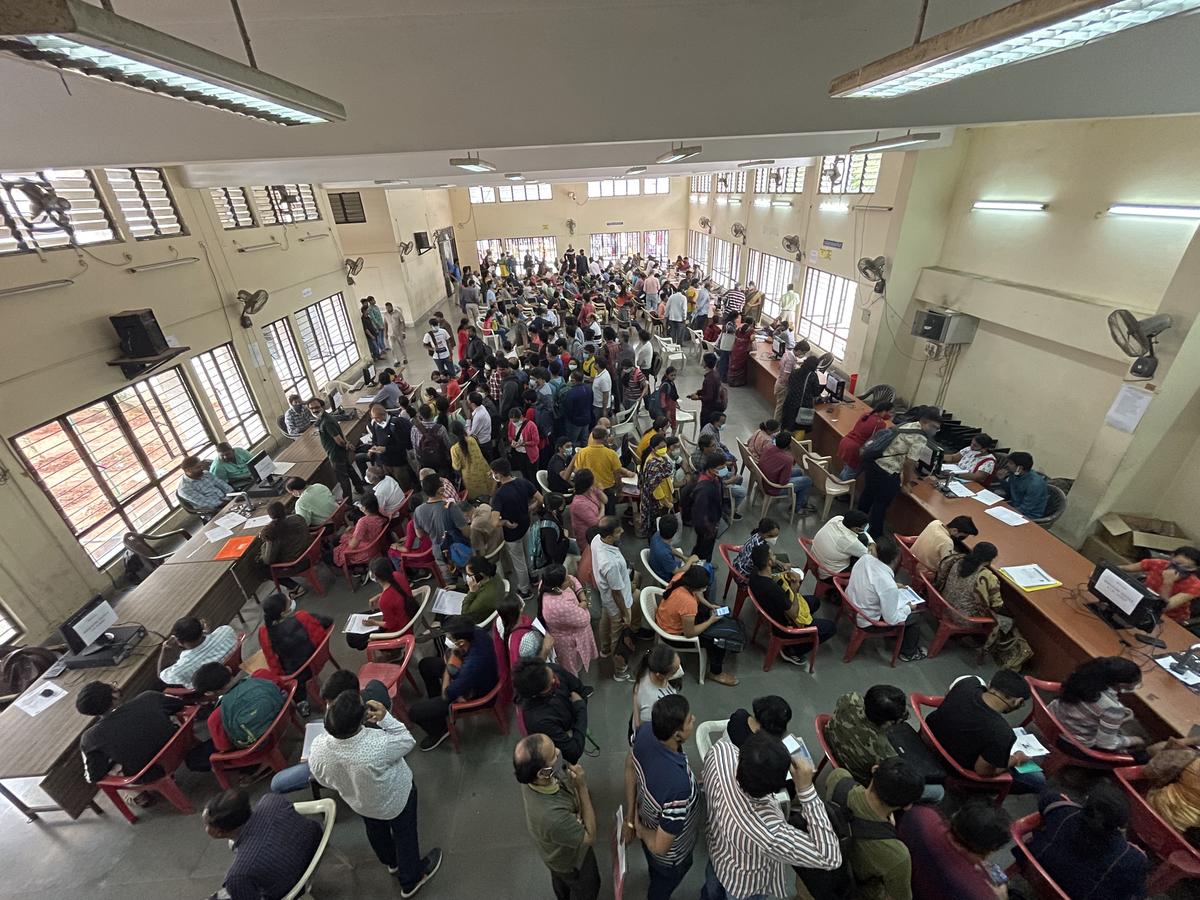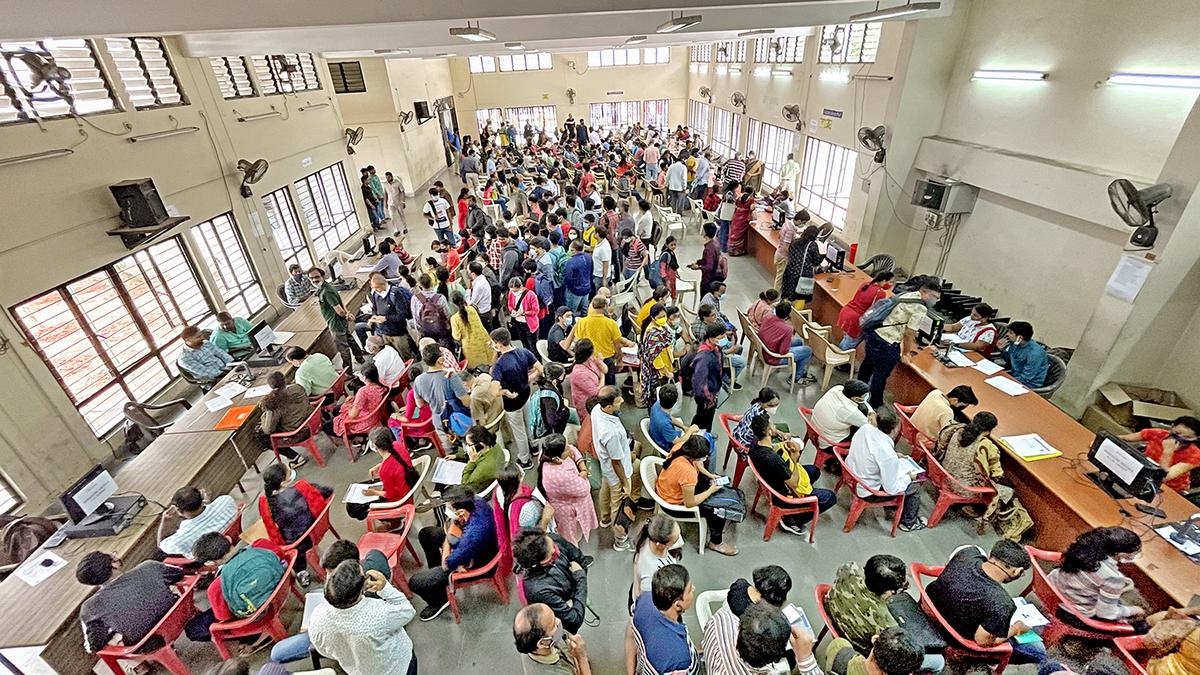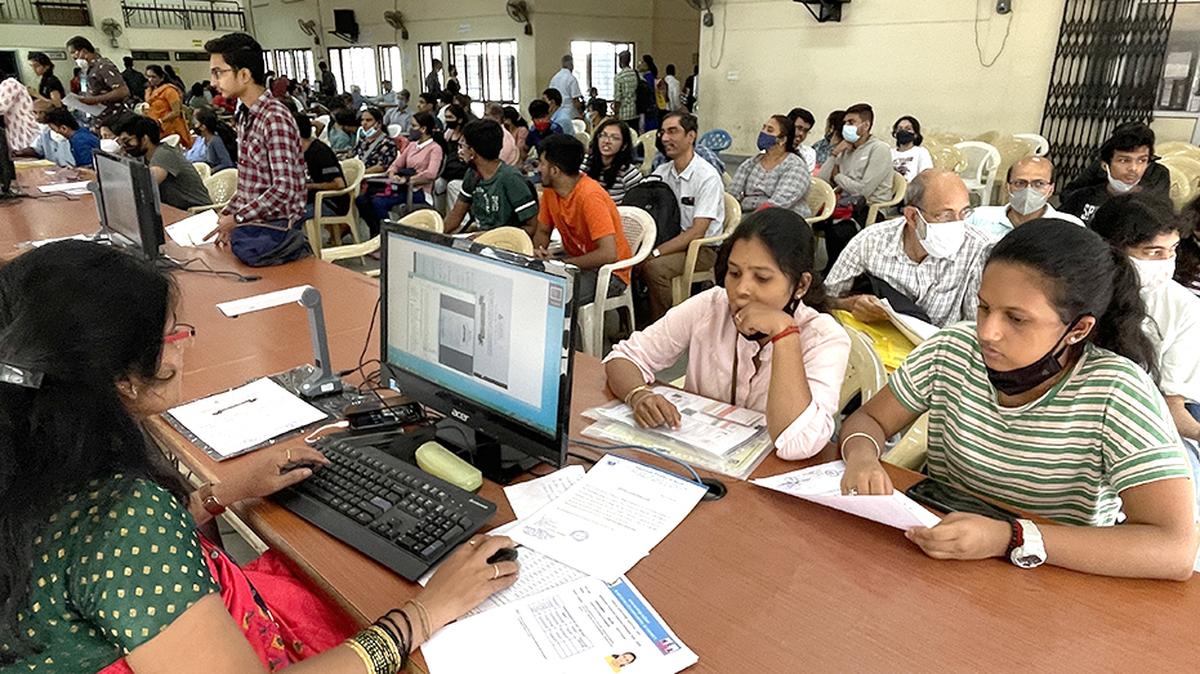Karnataka is witnessing a concerning increase in vacant seats in professional courses this year, with 59,724 seats remaining unfilled compared to 51,105 seats last year. Education officials attribute the rise to multiple factors, including declining student interest in certain courses, high tuition fees, and limited job opportunities in specific fields. Authorities have noted that despite rigorous admission drives, counseling sessions, and promotional campaigns, several professional programs struggle to attract students, particularly in rural and semi-urban regions where awareness and affordability remain significant challenges.
The increase in vacant seats spans disciplines such as engineering, pharmacy, management, and paramedical studies. Experts suggest that saturation in popular streams, coupled with limited career prospects in niche fields, discourages students from enrolling. Institutions are now exploring strategies to enhance course attractiveness, including introducing specialized programs, industry partnerships, skill development modules, and scholarships. Despite these efforts, officials acknowledge that a structural review of course offerings and alignment with market demands is essential to prevent further decline in student enrollment.
Authorities have highlighted that vacant seats not only represent lost academic opportunities but also result in financial losses for institutions. Underutilized infrastructure, faculty underemployment, and reduced tuition revenue strain colleges and universities, particularly private institutions. Government authorities have indicated that policy measures, including revised fee structures, incentives for students, and enhanced career counseling, are being considered to address the issue. Analysts emphasize the urgency of adapting professional courses to evolving industry trends to ensure higher enrollment rates in the coming academic years.

Factors Contributing to Vacant Seats
Experts cite affordability, limited awareness of emerging career paths, and perceived employability challenges as major contributors to rising vacant seats. Students increasingly prioritize courses with clear job prospects and higher returns on investment.
Institutions are urged to innovate curricula, enhance practical training, and collaborate with industry to make programs more relevant. Without such interventions, the trend of rising vacancies may continue, affecting both students and institutions alike.

Addressing the Vacancy Crisis
Education authorities are exploring policy interventions, scholarships, and awareness campaigns to attract students to underfilled courses. Aligning professional programs with market needs and skill development goals is critical for reversing the vacancy trend.

The rise in vacant professional course seats in Karnataka has sparked concern among educational planners and policymakers. Officials have pointed out that fields like engineering and pharmacy, traditionally popular, are seeing declining interest among students. Many students prefer emerging sectors such as data science, artificial intelligence, and digital marketing, leaving conventional programs under-enrolled. Additionally, rural and semi-urban students often lack awareness of the diverse career opportunities available, contributing to vacancies. The trend reflects a mismatch between course offerings and student aspirations, prompting universities and colleges to rethink curriculum design, career counseling, and outreach strategies to attract enrollments.
Financial considerations play a major role in the rising vacancies. Tuition fees in many professional programs are perceived as high relative to expected career outcomes. Parents and students weigh the return on investment carefully, often opting for courses with guaranteed employment or lower fees. Private institutions, in particular, face the dual challenge of filling seats while maintaining financial sustainability. Some colleges have begun offering scholarships, flexible fee structures, and merit-based incentives to attract students. Despite these measures, enrollment numbers indicate that more comprehensive solutions, including affordability and career assurance, are needed.
Vacancies are unevenly distributed across disciplines and institutions. While top-ranked colleges continue to fill most of their seats, lesser-known institutions struggle to attract applicants. This disparity exacerbates educational inequality, as students in remote areas or smaller towns have limited access to quality professional education. Policymakers have emphasized the importance of improving infrastructure, faculty quality, and course relevance to make institutions in smaller towns competitive. By enhancing the attractiveness of programs across regions, authorities hope to bridge the enrollment gap and reduce the number of unfilled seats.
Experts note that employment concerns significantly influence students’ choice of professional courses. Courses with high placement rates and strong industry ties remain popular, whereas programs with limited career prospects see declining enrollments. Industry partnerships, internships, and skill development initiatives can enhance course relevance and improve employability. Universities are encouraged to integrate practical training, industry-oriented projects, and mentorship programs into curricula. By aligning professional education with labor market requirements, institutions can make programs more appealing, reduce vacant seats, and ensure students are prepared for emerging sectors in the job market.
The COVID-19 pandemic has also contributed to changes in student preferences and enrollment patterns. Remote learning experiences and increased awareness of technology-driven careers have shifted interest toward IT, analytics, and digital entrepreneurship. Many students now prioritize programs offering flexible learning options and modern skill sets over traditional courses. Institutions that fail to adapt to these changing demands risk continued under-enrollment. Adapting teaching methods, updating course content, and integrating digital skills into traditional professional programs have become essential strategies for reversing the rising vacancy trend.
Student awareness campaigns and career counseling have been identified as critical interventions. Many students and parents are unaware of the scope and potential of certain professional courses. Initiatives such as career fairs, webinars, and guidance sessions aim to inform students about emerging career paths, future growth sectors, and the relevance of under-enrolled courses. Schools and colleges are being encouraged to actively promote programs that are critical for workforce development but remain unattractive due to misconceptions or lack of awareness, helping to reduce vacancies and encourage informed career choices among students.
Higher education regulators have noted that policy reforms are needed to improve enrollment. Suggestions include revising curriculum structures to incorporate market-relevant skills, providing incentives for institutions to innovate, and monitoring course viability periodically. Courses that fail to attract sufficient interest over consecutive years may be redesigned, merged, or supplemented with emerging skill modules. Such interventions aim to align academic offerings with student demand and industry needs, creating a dynamic professional education ecosystem that minimizes vacant seats while maintaining quality and relevance across Karnataka.
The increasing vacancies have financial implications for both private and government institutions. Underutilized infrastructure, unoccupied hostels, and unfilled faculty positions result in resource underutilization. Private colleges face revenue losses that can impact staff salaries, maintenance, and future expansions. Government institutions, while less profit-driven, also experience strain on budget allocations. Addressing vacancies is not only an educational priority but also an economic necessity. Institutions must strategize effectively to balance quality education, affordability, and infrastructure utilization while attracting sufficient student numbers to sustain operations.
Rural and semi-urban students face unique challenges in accessing professional education, contributing to unfilled seats. Limited awareness, inadequate preparatory resources, and financial constraints prevent many from pursuing courses outside their immediate locality. Authorities are exploring measures such as travel subsidies, merit scholarships, and local skill centers to bridge these gaps. By providing targeted support to students in underserved regions, institutions can increase enrollment in professional courses while promoting equitable access to education across Karnataka, ensuring that vacant seats do not disproportionately affect students in smaller towns and villages.
Demographic shifts are also influencing professional course enrollments. A decline in the number of students completing secondary education in some districts and increased competition from alternative career paths such as entrepreneurship and online certifications have contributed to vacancies. Universities are exploring flexible course structures, modular programs, and online learning options to cater to changing student preferences. Offering hybrid models that combine traditional professional training with emerging skills can make programs more attractive, helping institutions fill vacant seats and prepare students for a rapidly evolving job market.
Universities are also collaborating with industries to redesign course offerings to meet sectoral demand. Incorporating emerging technologies, practical workshops, and industry mentorship into traditional professional programs can enhance student employability. This approach addresses the core concern of perceived low career prospects in certain fields. By creating a direct pipeline from education to employment, institutions hope to increase enrollment and fill vacant seats, ensuring that students see tangible returns on their educational investments while meeting the workforce needs of Karnataka’s growing economy.
Government intervention may also play a key role in reversing the trend of increasing vacancies. Policy initiatives such as fee subsidies, skill-based scholarships, and increased funding for under-enrolled courses can incentivize students to opt for courses they might otherwise avoid. Strategic allocation of resources toward high-demand sectors and critical professional disciplines ensures that institutions remain viable and students gain meaningful career pathways. Authorities are actively considering multi-pronged strategies to make professional education both accessible and aligned with evolving market demands.
Analysts warn that if the trend of rising vacant seats continues, it may impact the overall quality and credibility of professional education in Karnataka. Colleges may resort to lowering admission standards or compromising on faculty quality to fill seats. This scenario could affect employability, student satisfaction, and institutional reputation. Proactive measures, such as restructuring curricula, improving career guidance, and ensuring financial and academic support for students, are essential to prevent long-term adverse effects on the state’s higher education ecosystem.
Finally, experts recommend a data-driven approach to understanding seat vacancies. Detailed analysis of student preferences, industry demand, regional enrollment patterns, and socio-economic factors can inform strategic interventions. Institutions can then target marketing, curriculum development, and support programs more effectively. Continuous monitoring and evaluation will help track the success of implemented measures, enabling policymakers and colleges to adapt strategies over time. By taking a holistic, evidence-based approach, Karnataka can reduce vacant seats, optimize professional course offerings, and ensure that students have access to meaningful educational and career opportunities.
Follow: Karnataka Government
Also read: Home | Channel 6 Network – Latest News, Breaking Updates: Politics, Business, Tech & More

